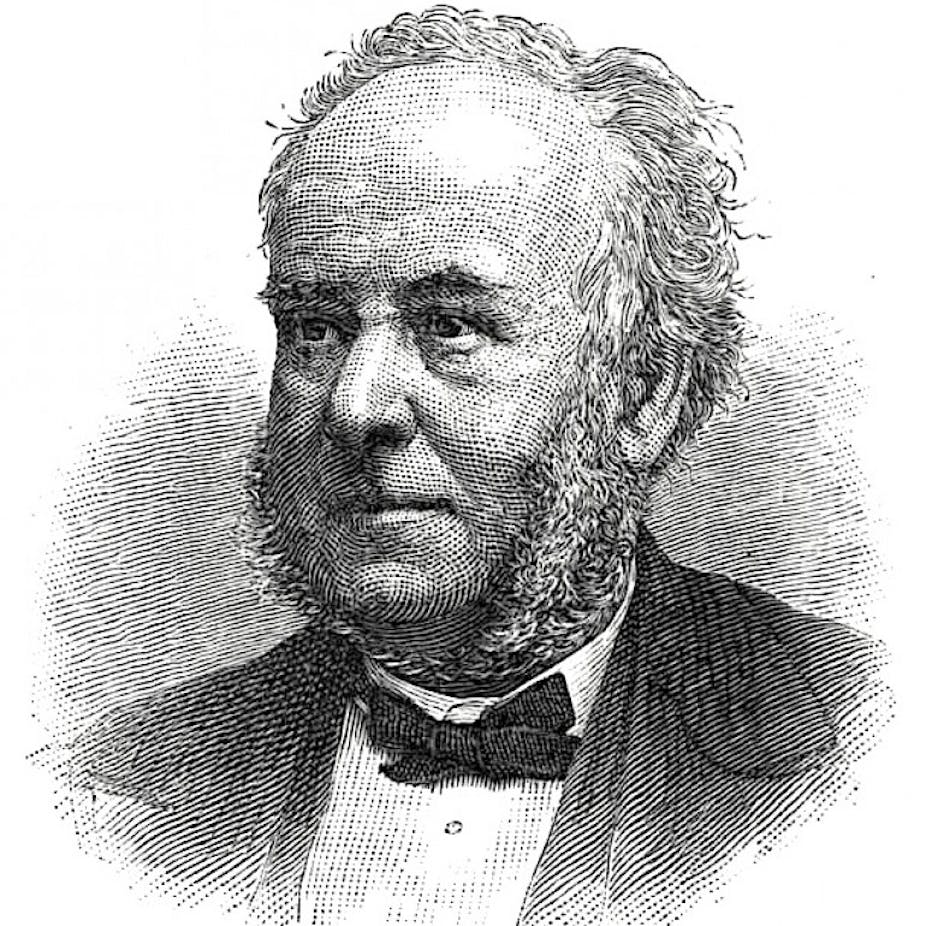We live at probably the last moment when press barons such as Rupert Murdoch can hope to shape the political agenda, such are the waning fortunes of the print media. But who founded the popular press – and who created the sensationalist approach of the tabloids?
Some say it was Lord Northcliffe, who established the Daily Mail in 1896. Northcliffe was, however, preceded by the transformative figure of Edward Lloyd. Never heard of him? Lloyd (1815-1890) has never been given his due. He published the first newspaper to sell a million copies and shaped the popular imagination in fundamental ways.
Before he became a Victorian press baron, Lloyd was one of the dominant forces behind the sale of popular fiction to a growing market of increasingly literate working-class people. When we think of the 1840s, we think of the publication of major novels such as Jane Eyre or Vanity Fair. The reality is that many readers were as likely to consume Ada the Betrayed as well as Vileroy, or, The Horrors of Zindorf Castle – both shockers issued by Lloyd’s publishing house.

Hailing from a humble background, Lloyd became a leading publisher in London, promoting a group of hacks who would knock out cheap fiction. He knew what would sell: horrors, romance and thrills.
He launched a wave of “penny dreadfuls” on to the market in the 1830s and 1840s, all assisted by lurid pictures. As Lloyd exclaimed to his illustrators: “There must be blood … much more blood!”
The best known of these stories was The String of Pearls in 1846 which introduced the enduring character of Sweeney Todd. Even before the serial had finished publication, Sweeney Todd had been taken up by the popular stage.

Audiences loved the barber who murdered men who came to his Fleet Street shop for a shave and gave their bodies to Mrs Lovett next door to be made into meat pies. The dark humour is captured in the words of one character who says: “I’d eat my mother, if she was a pork chop.”
This was not the only ghoulish character to emerge from Lloyd’s offices. James Malcolm Rymer wrote Varney the Vampire for Lloyd, the most important undead character before Dracula. This was a form of distinctly working-class horror fiction, marked by a taste for blood and violence.
Nicking Dickens
Lloyd had no time for originality. He built up his firm by publishing plagiarisms of Charles Dickens’s works. The reading public was thus treated to works such as The Penny Pickwick, Oliver Twiss and Nickelas Nickelbery. Dickens was outraged by this treatment but was powerless to prevent such works appearing.
It is possible that many working-class readers first encountered Dickens via a Lloyd plagiarism, rather than one of the author’s own works (a perspective that should make us rethink the initial reception of Dickens).

Cheap newspapers came to dominate Lloyd’s output. Lloyd’s Weekly Newspaper was launched in 1842 and became one of the most important newspapers aimed at a popular readership at a time when the press had been forced since 1819 by the government to pay stamp duties (the “Taxes on Knowledge”) which inflated the price of print. He combined serious news reporting with stories of horrible murders, train crashes and aristocratic divorces. In some respects, his newspaper employed the techniques of popular fiction to grab an audience with accounts of true crime.
Lloyd also revolutionised newspaper production by introducing Richard Hoe’s rotary press to Britain, which sped up the process of putting out newspapers and made mass publication possible. With the abolition of the stamp and paper duties by the early 1860s, Lloyd was able to lower the price of his paper to one penny. The popular press had arrived.
Yellow press
Lloyd’s Weekly Newspaper was one of a series of mass circulation Sunday papers, including The News of the World (issued in 1843), which created a newspaper reading habit in increasingly literate workers.

Lloyd was also a great believer in self-promotion. At one point he took to embossing coins with which he paid his workers with a stamp promoting his paper. This was denounced by The Times and an act of parliament had to be passed in 1853, making the defacing of the coinage illegal.
As his newspaper became more popular, Lloyd left his penny dreadfuls behind and was later embarrassed that they had been the source of his fortune. His paper tended to support Gladstone and the Liberal party, helping it to dominate mid-Victorian politics. The Conservative Party identified Lloyd’s as promoting “pernicious doctrines”, which included worker rights, free trade and democracy.
Lloyd died in 1890 but his newspaper remained popular, selling a million copies for the first time in 1896. As it went into the 20th century, the paper was outgunned by new rivals such as the Daily Mail and came to an end in 1931, having appeared for almost 90 years.
Lloyd’s reputation has gone into eclipse and he is seldom remembered. He was, however, a true pioneer. His legacy remains the sensationalism of the popular press but it can also be found in every slasher film, vampire drama and gothic romance from Twilight to the television series Penny Dreadful.

